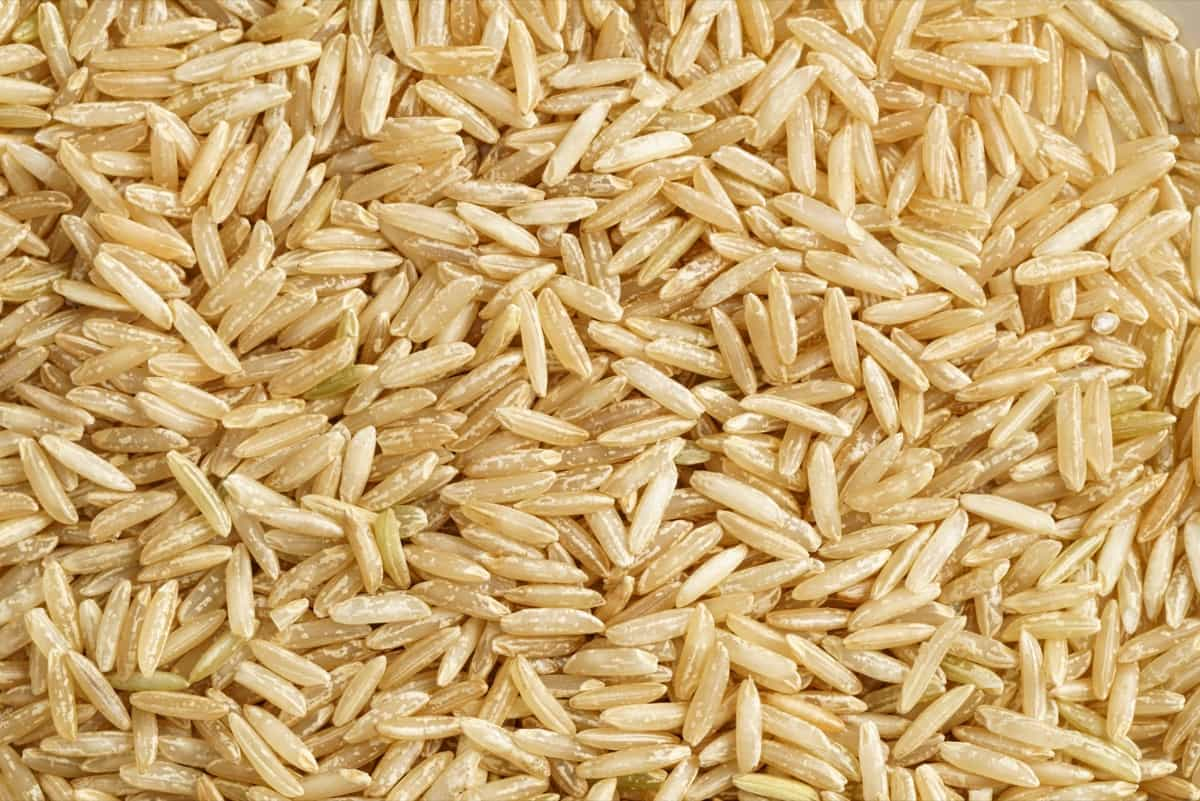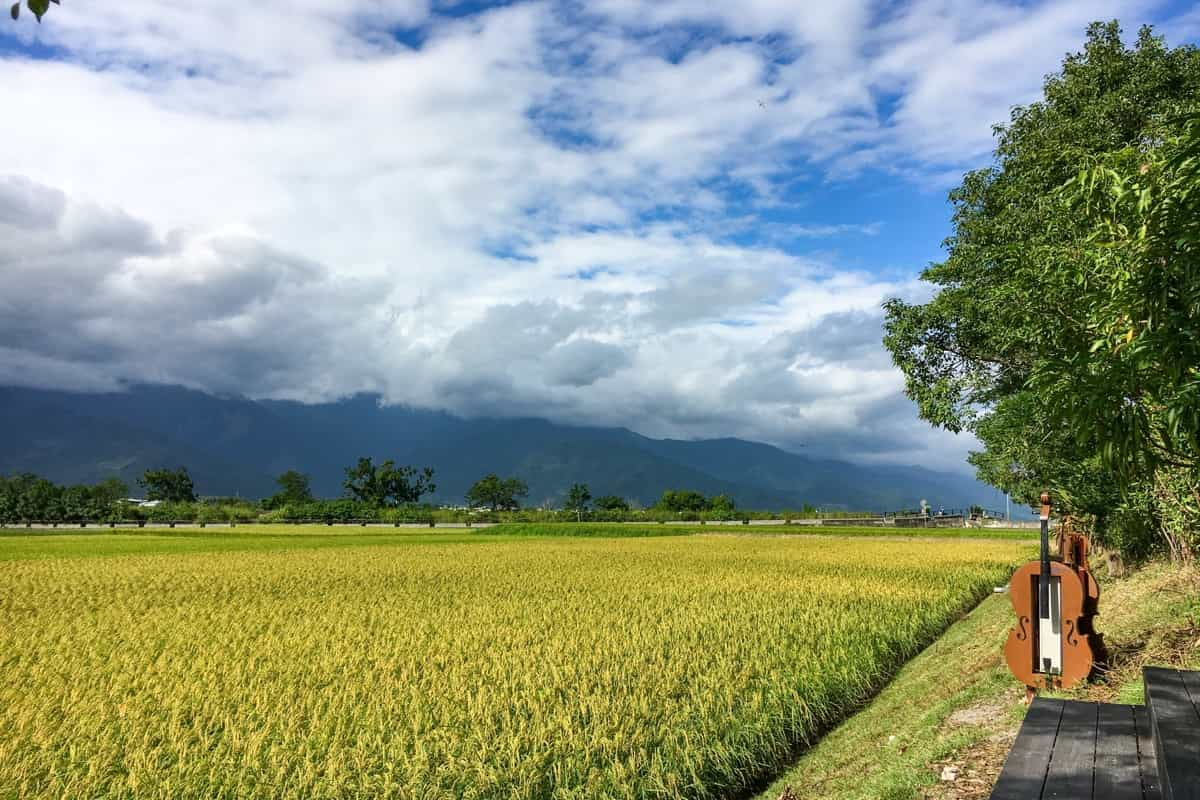Basmati Rice is known for its delicate aroma and long, slender grains cultivated for centuries. Organic Basmati Rice farming techniques focus on sustainable methods that promote soil health and biodiversity. Incorporating organic manure or green manure helps improve the nutrient content of the soil while reducing reliance on synthetic fertilizers.

How to Grow Organic Basmati Rice: A Step-By-Step Guide
- Firstly, proper land preparation is crucial. The main field should be dry ploughed around 2 to 3 weeks before planting. After ploughing, the field should be submerged in 5– 10 cm of standing water. This helps create the ideal conditions for Rice growth.
- Next, incorporate organic manure or compost into the soil. Adding around 10 to 12 tonnes of organic manure or compost per acre can significantly improve soil fertility and provide essential nutrients for Rice plants. Alternatively, using green manure at a rate of 10 to 25 tonnes per acre can also enrich the soil.
- When it comes to seed selection and preparation, choose high-quality seeds that are certified as organic. Soak the seeds in clean water overnight before sowing them in nursery beds or directly transplanting them into the main field.
- Integrated pest management techniques can be employed to control pests and diseases naturally. This includes regularly monitoring fields, practicing crop rotation, using biological controls like beneficial insects or birds, and applying natural pest repellents such as neem oil or garlic extract.
- Proper irrigation methods are crucial for successful cultivation. The field should be flooded three days before transplanting to ensure adequate moisture levels during early growth.
- Organic fertilizers play a vital role in providing essential nutrients without synthetic chemicals. Utilize natural sources such as cow dung-based composts or vermicompost enriched with beneficial microorganisms that enhance nutrient availability and support healthy plant growth.
- Harvesting timing is critical for obtaining the optimum yield and quality of Basmati Rice grains.
Growing Organic Basmati Rice in Sustainable Methods
- Organic farming practices have gained immense popularity recently due to their numerous environmental and health benefits. Adopting sustainable methods is key to achieving success while preserving the natural ecosystem when growing organic Basmati Rice.
- Proper land preparation is the main step in sustainable cultivation. Dry ploughing the main field three weeks before planting ensures that the soil is adequately prepared for transplanting seedlings.
- Incorporating organic or green manure into the soil adds essential nutrients, improving fertility and promoting healthy plant development.
- To further promote sustainability, it is crucial to implement natural pest and disease control methods.
- Efficient water management techniques should be employed. Drip irrigation systems or controlled flooding can minimize water wastage while ensuring that Rice plants receive adequate moisture throughout their growth cycle.
- Certified organic seeds are vital in sustaining organic Basmati Rice cultivation. These seeds are free from harmful chemicals and genetically modified organisms (GMOs), ensuring that your crop remains truly organic from start to finish.
Organic Basmati Rice Seed Selection and Preparation
- Choosing the right seeds is crucial for successful organic Basmati Rice cultivation. Start by selecting high-quality, certified organic seeds from a reliable source. Look for seeds specifically bred for organic farming practices and resistant to pests and diseases.
- Before planting, it’s important to prepare the seeds properly. Begin by soaking them in water overnight to enhance germination. After soaking, drain the water and spread the Rice seeds on a clean cloth or paper towel to dry for a few hours.
- Once the seeds are dry, please treat them with beneficial microorganisms such as Trichoderma or Pseudomonas to protect against soil-borne diseases. This natural method of seed treatment helps boost plant immunity and promotes healthy growth.
- After treating the seeds, they are ready for sowing. Prepare your nursery beds with well-draining soil enriched with compost or organic matter.
Irrigation Methods for Organic Basmati Rice Cultivation
- Flood Irrigation: This traditional method involves flooding the field with water to ensure adequate moisture levels throughout the growing season. It helps control weeds and pests while providing essential nutrients to the plants.
- Drip Irrigation: This modern technique involves delivering water to the root zone of each plant through a network of tubes or pipes with emitters. It minimizes water wastage and ensures efficient water distribution, leading to healthier plants and higher yields.
- Sprinkler Irrigation: Water is sprayed over the field using sprinklers that distribute it evenly across the crops. It mimics natural rainfall and can be adjusted according to specific crop requirements.
- Subsurface Irrigation: In subsurface irrigation, perforated pipes or buried drip lines deliver water below ground level into the root zone of plants, minimizing evaporation losses and reducing weed growth.
In case you missed it: Rice Fertilizer Requirements and Recommendations: Management for Optimal Yield

Organic Fertilizers for Healthy Basmati Rice Plants
- Compost: Composting is a natural way to recycle organic matter and enrich the soil. It improves soil structure, enhances water retention capacity, and slowly releases nutrients.
- Green manure: Growing leguminous crops like clover or alfalfa as cover crops helps naturally fix atmospheric nitrogen in the soil. These green manures can be plowed under before planting Basmati Rice, providing a nutrient boost.
- Vermicompost: Vermiculture uses earthworms to decompose organic waste into rich compost known as vermicompost. This nutrient-dense fertilizer is excellent for enhancing soil fertility and microbial activity.
- Fish emulsion: Made from fermented fish waste, fish emulsion is high in nitrogen content—a vital nutrient for vigorous plant growth. It contains trace minerals that contribute to overall plant health.
- Bone meal: It is an excellent source of phosphorus and calcium—an essential mineral for developing strong roots and promoting flowering in Basmati Rice plants.
Natural Pest and Disease Control for Organic Basmati Rice
- Promoting biodiversity in the field can play a crucial role in pest control. By planting companion crops such as marigolds or incorporating beneficial insects like ladybugs and lacewings, you create an environment that discourages harmful pests while attracting their predators.
- Additionally, crop rotation is another effective strategy. Alternating Rice cultivation with non-host crops reduces the soil’s buildup of specific pathogens and pests.
- Furthermore, practicing proper water management is essential. Overwatering can increase disease incidence, so maintaining optimal water levels helps prevent fungal infections.
- Regular monitoring of the fields is also vital for early detection of any potential problems. This allows timely intervention using natural remedies such as neem oil sprays or garlic-pepper solutions to deter pests.
- Applying organic fertilizers rich in micronutrients helps strengthen plants’ immune systems and makes them less susceptible to diseases.
Harvesting and Storage Tips for Organic Basmati Rice
- It is a crucial step to preserve its quality and taste. Basmati Rice should be harvested when most grains have turned golden brown but retain some moisture. This ensures optimal flavor and aroma. The traditional method of hand-cutting the crop with sickles allows for selective harvesting, ensuring only ripe grains are collected.
- Once harvested, it’s important to dry the Rice thoroughly before storage. Spread the freshly harvested paddy in a thin layer on clean mats or tarpaulins under direct sunlight for 3-4 days. This helps remove excess moisture and prevents mold formation.
- After drying, threshing can be done using manual methods or mechanical equipment like threshers or combine harvesters. Threshed paddy should then be winnowed to separate the grain from the chaff.
- Choose clean, dry containers with tight-fitting lids that protect against pests and humidity for proper storage. Storing Basmati Rice in cool, dark places away from direct sunlight is best.
- Regularly inspect stored Rice for signs of pests or moisture accumulation. Proper ventilation is essential to prevent spoilage caused by fungal growth.
Organic Certification Requirements for Basmati Rice Cultivation
- Farmers must use only approved organic fertilizers, pesticides, and herbicides in their cultivation practices. These inputs should be free from synthetic chemicals and genetically modified organisms (GMOs).
- To obtain certification for cultivating organic Basmati Rice, individuals must be assessed by a recognized certifying body or agency accredited by relevant authorities such as National Programs for Organic Production (NPOP) or Participatory Guarantee Systems (PGS).
In case you missed it: Best and Latest Pesticides for Rice/Paddy to Control Insect Pests and Diseases For Better Profits

Conclusion
Growing organic Basmati Rice requires careful cultivation practices to ensure high-quality yields. Basmati Rice can be grown organically without harmful chemicals or pesticides. This ensures a more sustainable and environmentally friendly cultivation process while preserving the natural flavors of this exquisite grain.
- Ultimate Guide to Ossabaw Island Hog: Breeding, Raising, Diet, and Care
- Ultimate Guide to Juliana Pig: Raising Facts, Size, Diet, Care, and Lifespan
- Raising Lleyn Sheep: Disadvantages, Price, Uses, Characteristics, and Care
- Ultimate Guide to Meishan Pig: Breed Facts, Breeding, Raising, and Care
- Ultimate Guide to Teacup Pigs: Raising, Diet, Lifespan, Cost, and Care
- Guide to Raising Poll Dorset Sheep: Facts, Profile, Characteristics, Uses, and Care
- Ultimate Guide to Bighorn Sheep: Characteristics, Diet, Lifespan, Breeding, and Lifecycle
- Ultimate Guide to Raising Katahdin Sheep: Farming Facts, Breed Profile, Uses, and Care
- Ultimate Guide to Raising Oreo Cows: Belted Galloways Farming Facts, Profile, Uses, and Care